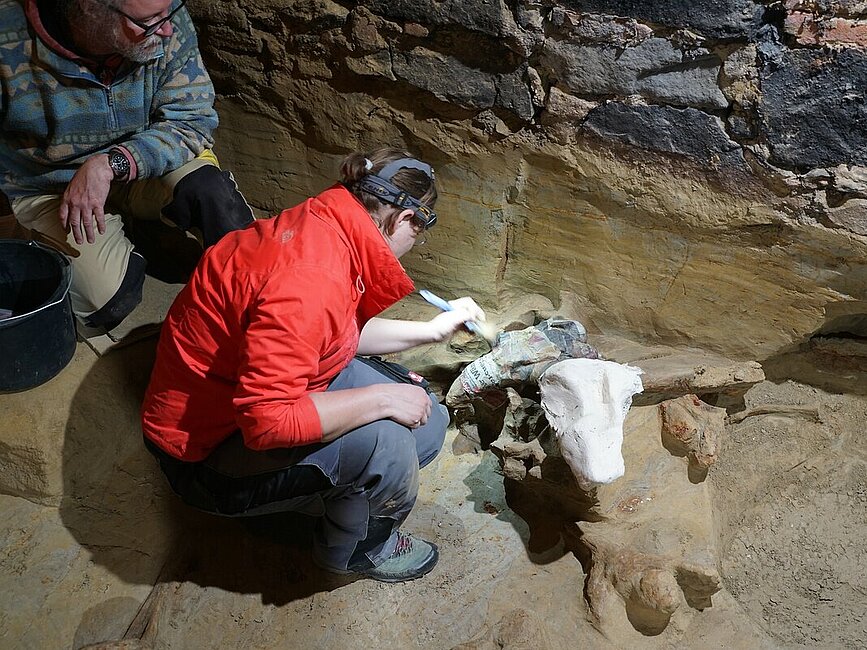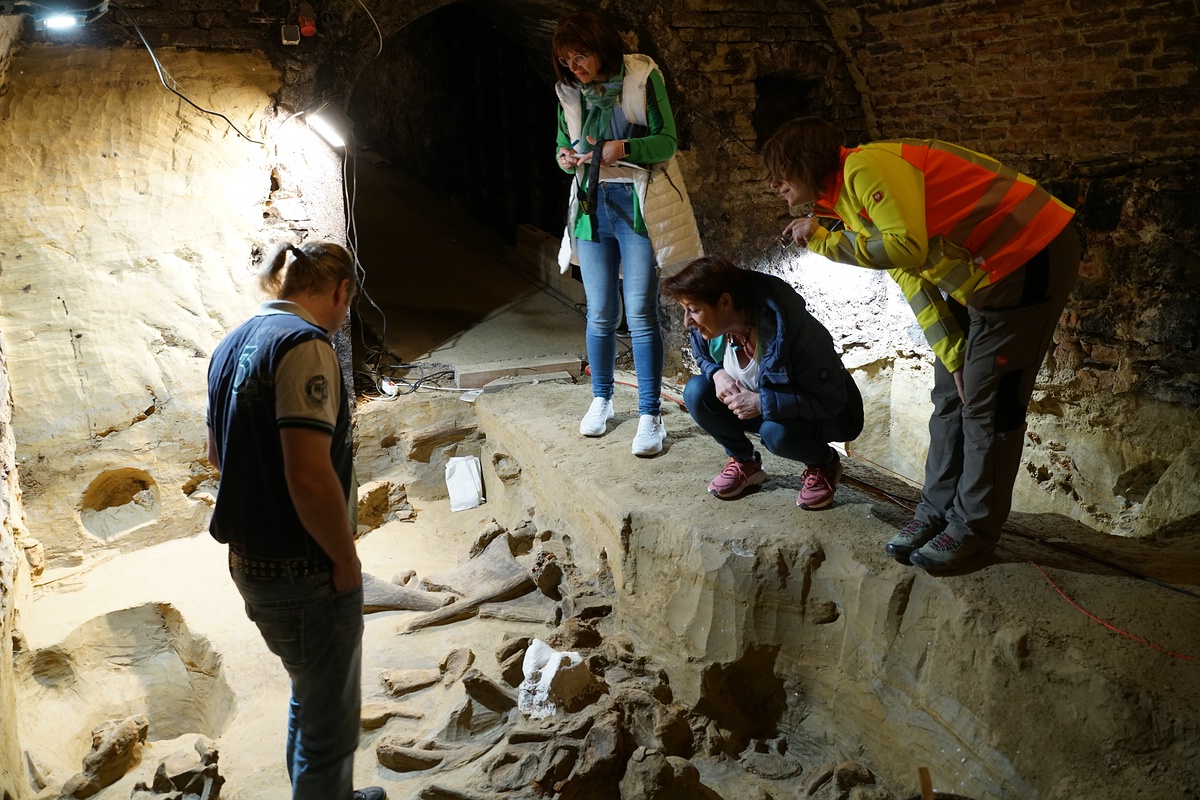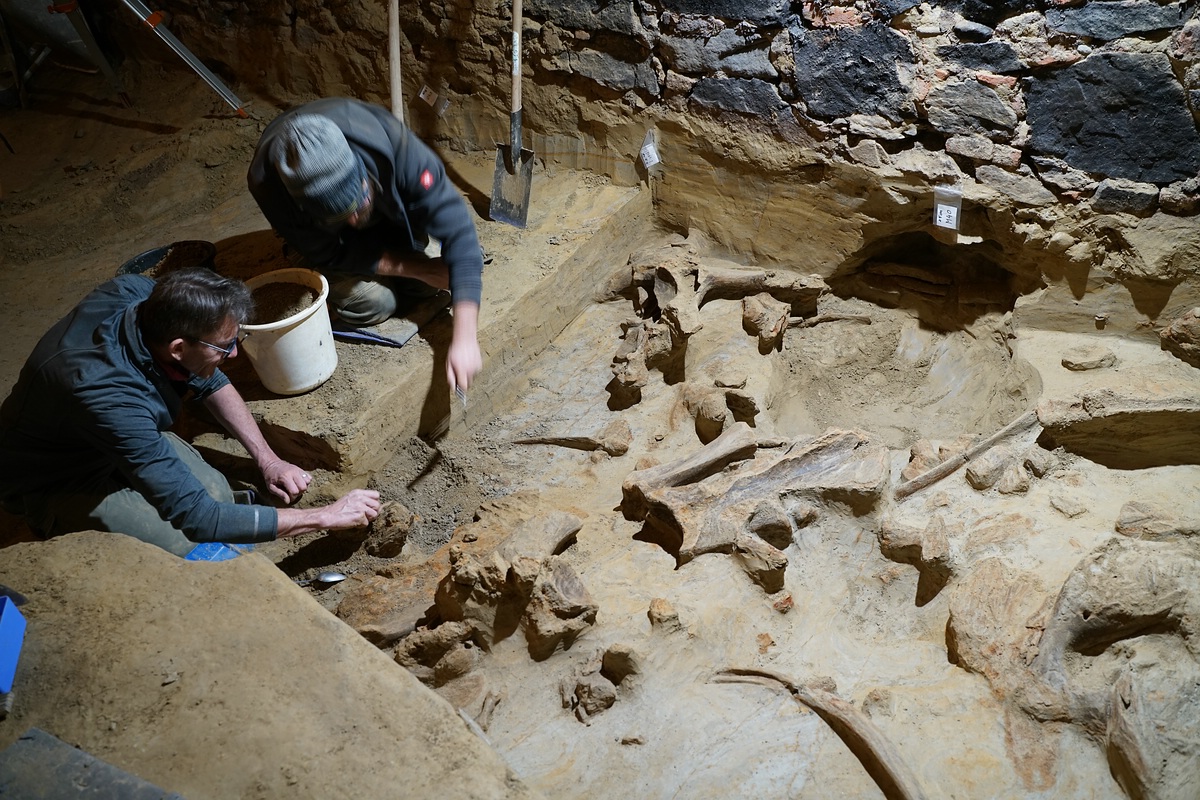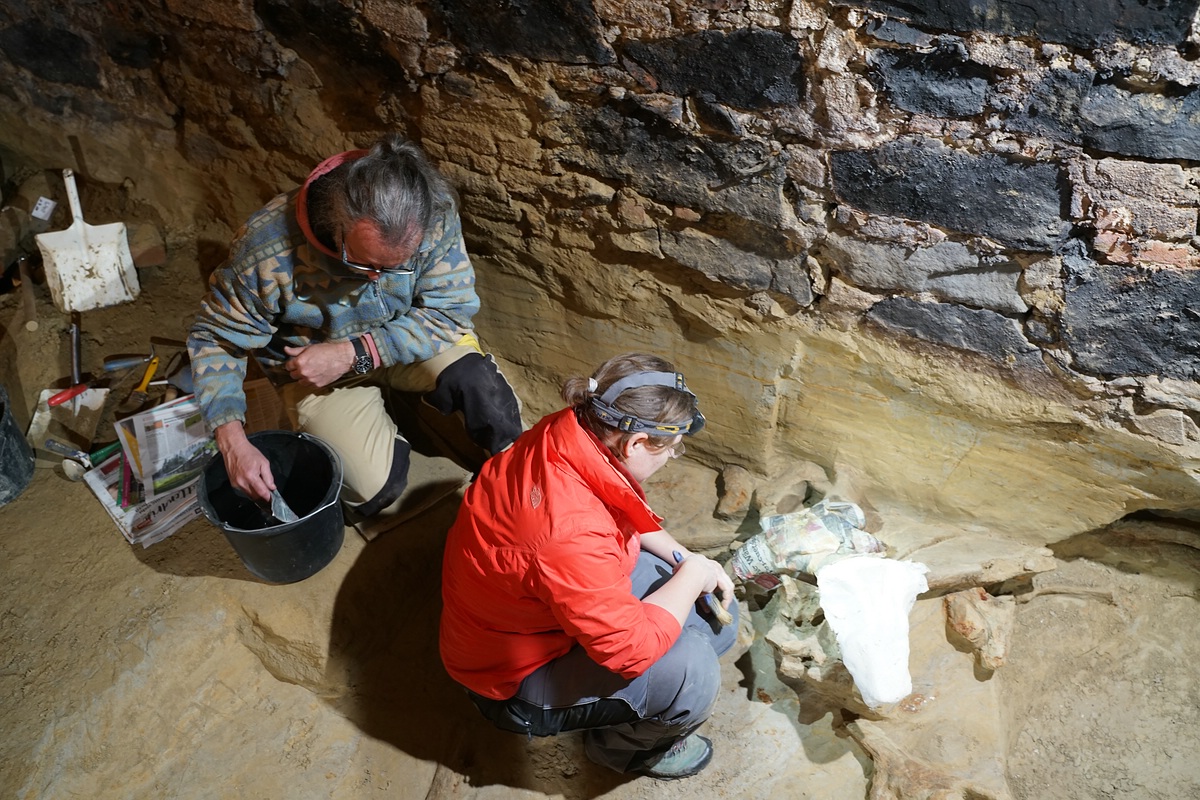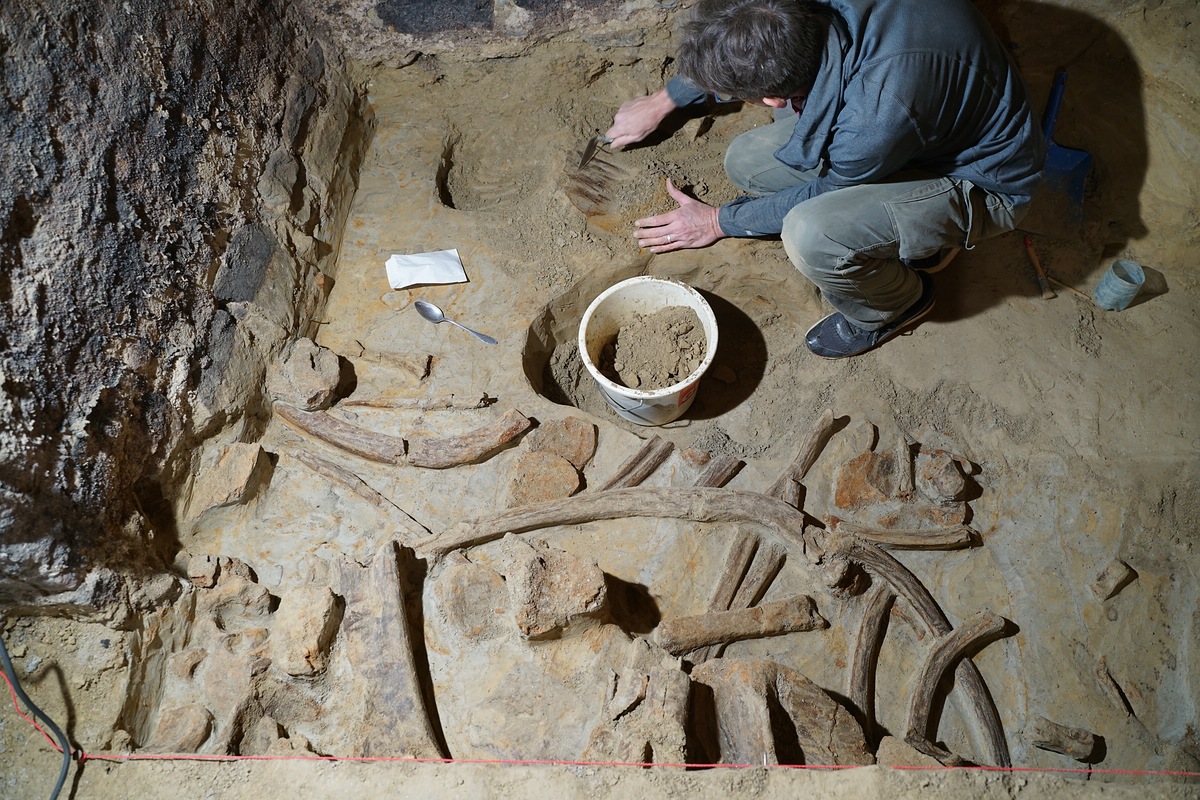While renovating his wine cellar in Gobelsburg in the district of Krems, Andreas Pernerstorfer discovered a treasure: he came across huge bones that turned out to be Stone Age mammoth bones. He reported the find to the Federal Monuments Office, which referred him to the Austrian Archaeological Institute of the Austrian Academy of Sciences (OeAW).
Bones from three different mammoths
Since mid-May, archaeologists have uncovered several layers of mammoth bones. According to archaeologists Thomas Einwögerer and Hannah Parow-Souchon from the Austrian Archaeological Institute, the stone artifacts and charcoal found at the site indicate that the finds are between 30,000 and 40,000 years old. They assume a "significant bone layer" containing the remains of at least three different mammoths.
"Such a dense bone layer of mammoths is rare," says Hannah Parow-Souchon, who is leading the excavation. "It's the first time we've been able to investigate something like this in Austria using modern methods."
Presumed site of death
The last time comparable finds were made in Austria was 150 years ago, also in the district of Krems. At that time, a thick layer of bones and cultural layers with flint artifacts, decorative fossils and charcoal were discovered in an adjacent cellar in Gobelsburg. During the excavation there, the cellars in question were completely cleared out. Other comparable sites in Austria and neighbouring countries were mostly excavated at least 100 years ago and have largely been lost to modern research.
The find in Gobelsburg certainly raises many exciting questions, such as how Stone Age people were able to hunt these huge animals. "We know that humans hunted mammoths, but we still know very little about how they did it," says OeAW researcher Parow-Souchon. Bones from three different mammoths were found: The place where they were found could be the place where the animals died. Humans could have chased them there and set a trap for them.
The find is currently being examined by the researchers and will subsequently be handed over to the Natural History Museum Vienna, where the bones will be restored. The excavations were funded by the Federal Monuments Office and the province of Lower Austria.
